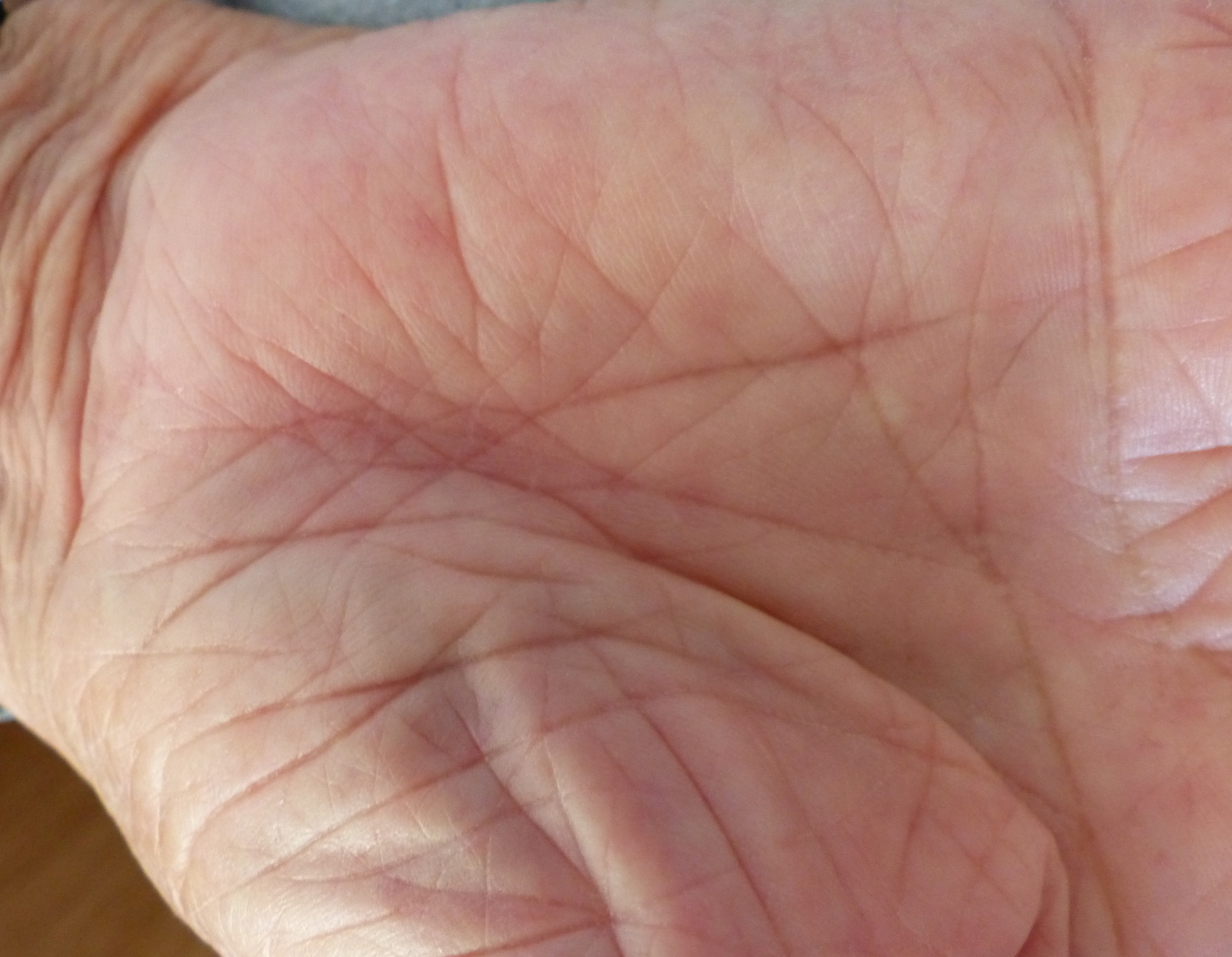Pressure can build up around nerves in the arm and hand. When this occurs the nerve is said to be 'trapped' and this causes combinations of pins-and-needles, aching, burning pain, numbness and may progress to a stage where muscles are permanently weakened. Symptoms are intermittent at first and then become more continuous and interfere with sleep and daily activities.
By far the commonest nerve to be trapped is the 'median' nerve in the 'Carpal Tunnel'. The carpal tunnel is in the heel of the hand. It is a narrow channel between the bones of the wrist which contains several tendons and the median nerve. Pressure can build up in this narrow channel, usually because of some mild swelling on the tendons. The pressure affects the median nerve and this causes the 'Carpal Tunnel Syndrome' which may be felt in the fingers, hand and forearm.
The next most common nerve to be trapped in the arm is the 'Ulnar' nerve and this is usually trapped behind the elbow - ‘Cubital Tunnel Syndrome’. Despite being trapped at the elbow, the symptoms are felt in the hand and fingers (usually the little finger).
A trapped nerve at the wrist can frequently be diagnosed in clinic without the need for special tests but in some cases, ‘nerve conduction tests’ will be needed to help with diagnosis especially if cubital tunnel syndrome is suspected.
Carpal tunnel syndrome in its mildest form may be treated with a removable splint. Where the condition is more severe it will be necessary to release the pressure on the nerve with a short operation. This is a day case, awake procedure (local anaesthetic). Many patients report that their condition is improved within a day or two of surgery. After the operation, gentle daily activities are encouraged immediately although very repetitive or strenuous activities will not be possible for several weeks.
It is possible for other nerves in the forearm, hand and wrist to be trapped but these are much rarer conditions (Wartenburgs syndrome, Guyons canal compression, Radial Tunnel Syndrome, Pronator Syndrome). Where necessary, these are amenable to surgical release also.
It may also become apparent that a problem in the neck is causing pain to travel along the nerves to the arm and the hand. If this is suspected further scans and specialist opinions may be required.
Bilateral carpal tunnel release
In many cases both hands are affected by carpal tunnel. Some patients choose to have both sides operated on together as this means only a single period of 'down-time' from work and activities. This is entirely feasible and well tolerated.
"The tingling and numbness in my hands, due to carpal tunnel problems, had been getting slowly worse over many months and then one hand became very painful and kept me awake a lot at night. When I was offered the option of bi-lateral surgery (i.e. both hands at the same time) I saw it as the best and quickest way of dealing with my problems. I did have some apprehensions and some of my friends and family were very unsure about it, but I stuck with my decision and looking back was absolutely right to do so. In the week that I had both hands heavily bandaged some compromise and ingenuity were needed (e.g. large polythene bags and elastic bands whilst toiletting and showering) but I felt it would have been little different with only one hand bandaged and then I would have had to do the whole thing again at a later date. Having had both hands treated at the same time I immediately had a very welcome, pain free, night’s sleep. Once the bandages were removed and replaced with plasters life returned pretty much to normal." IB
Video taken within minutes of performing bilateral carpal tunnel surgery using 'wideawake' local anaesthetic technique. No bandaging or other impediment to the hands allows early return to normal activities.
Dear Mr Harley, I just wanted to pass on my sincere thanks for the benefits the carpel tunnel surgery on 1 December has brought me - recovery has been excellent and I can honestly say the time since has been pain-free (other than the moments I actually forgot my injury and shook hands). I was able to drive four days later - helped by the simple £1 cotton scaffolding gloves ........... worth perhaps letting your other patients know about those as they aid grip easily. Thank you again for your truly excellent work and really motivating manner - all much appreciated. Happy Christmas SS. Leatherhead
Absorbable stitches - no need to have them removed - knots fall away approx 3 weeks after operation
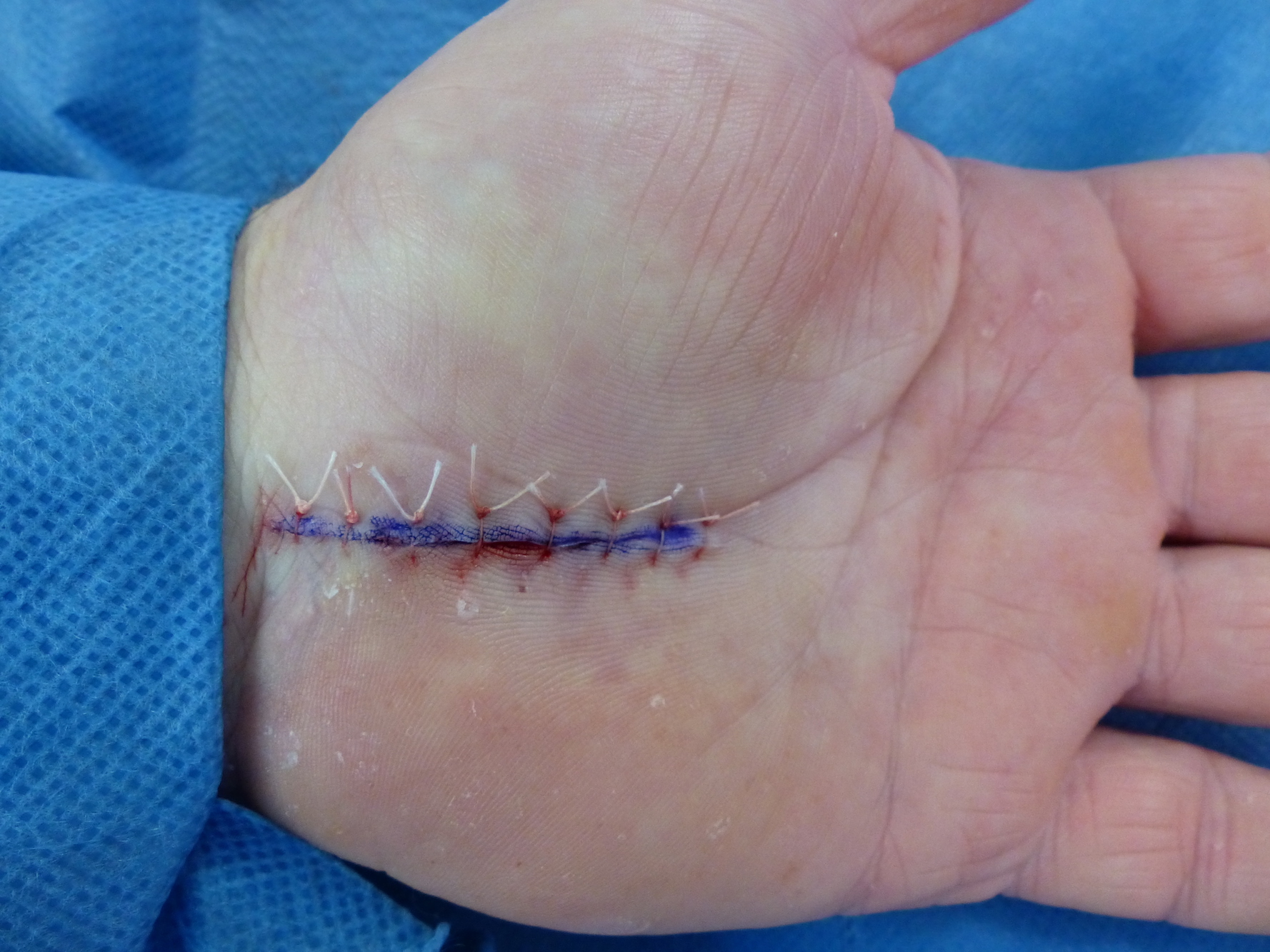
Only a sticking plaster is necessary (no bandages) - this allows unrestricted mobilisation immediately. Quicker recovery and return to normal as a result.
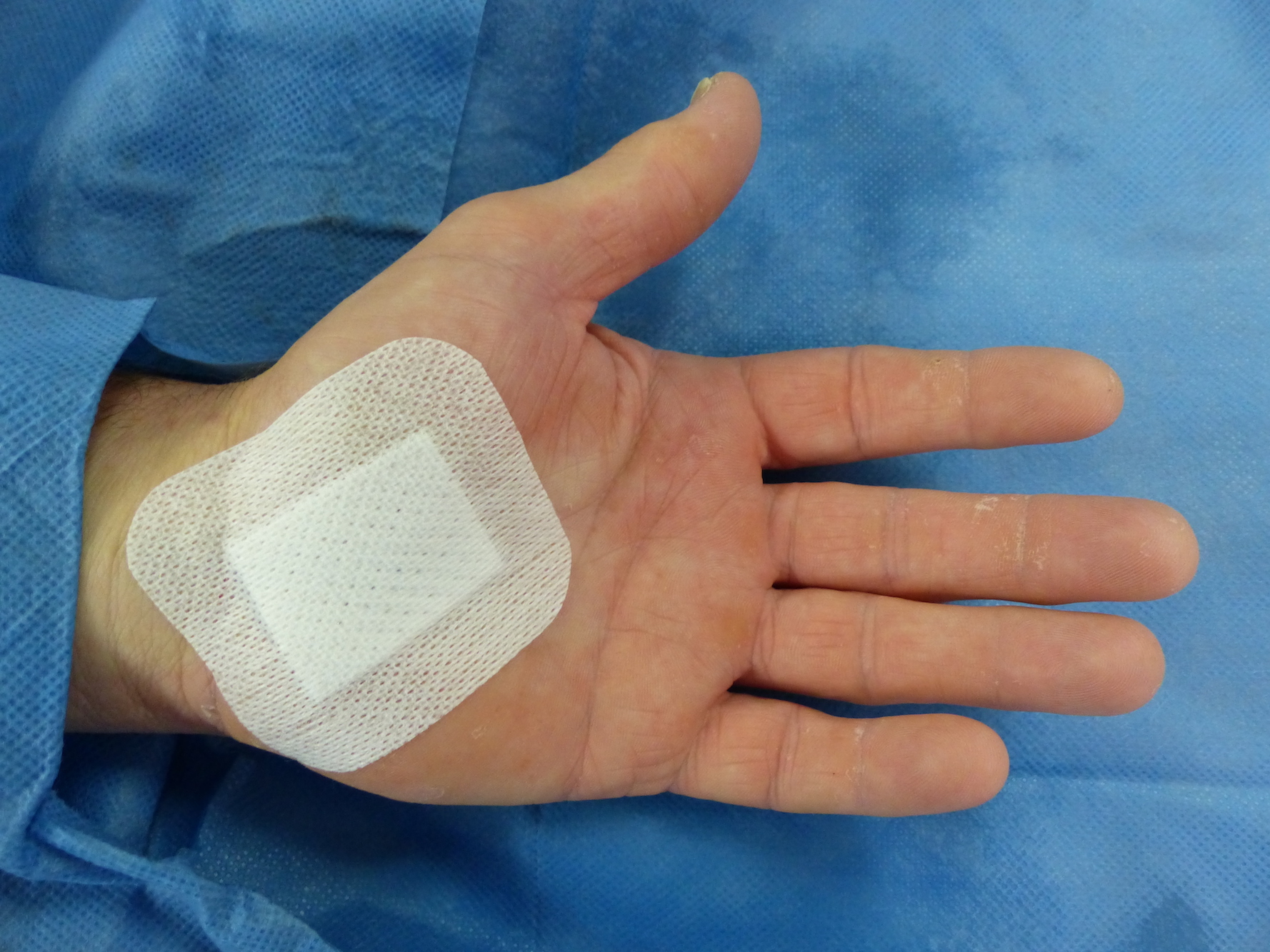
4 weeks after surgery. Stitch knots have fallen away. Scar may be a bit itchy, sore or sensitive; this responds well to regular massage and activity.
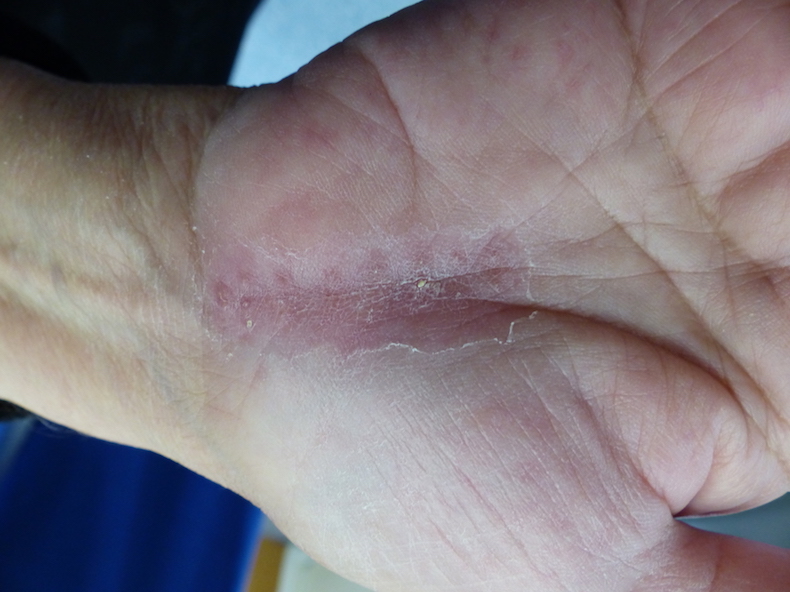
3 months after surgery - some redness, sensitivity and a bit of swelling persists
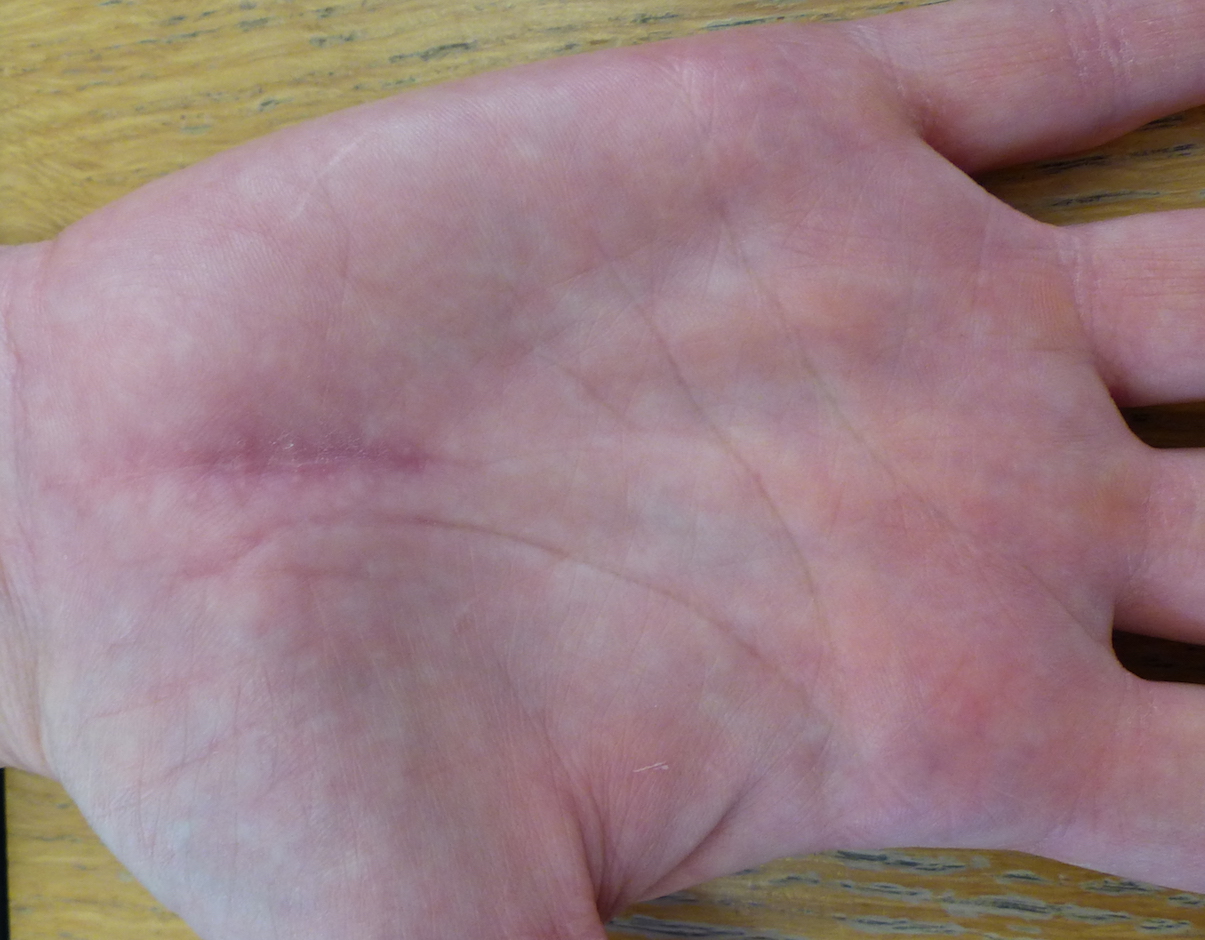
1 year after surgery - Well healed and matured scar
